A Beginners Guide to Planting A Flower Garden
Starting your own flower garden may seem a bit intimidating at first. But like the saying goes, you just have to get your hands dirty! This beginners guide to planting a flower garden will walk you through each of the necessary steps and help you gain the confidence you need to get started.
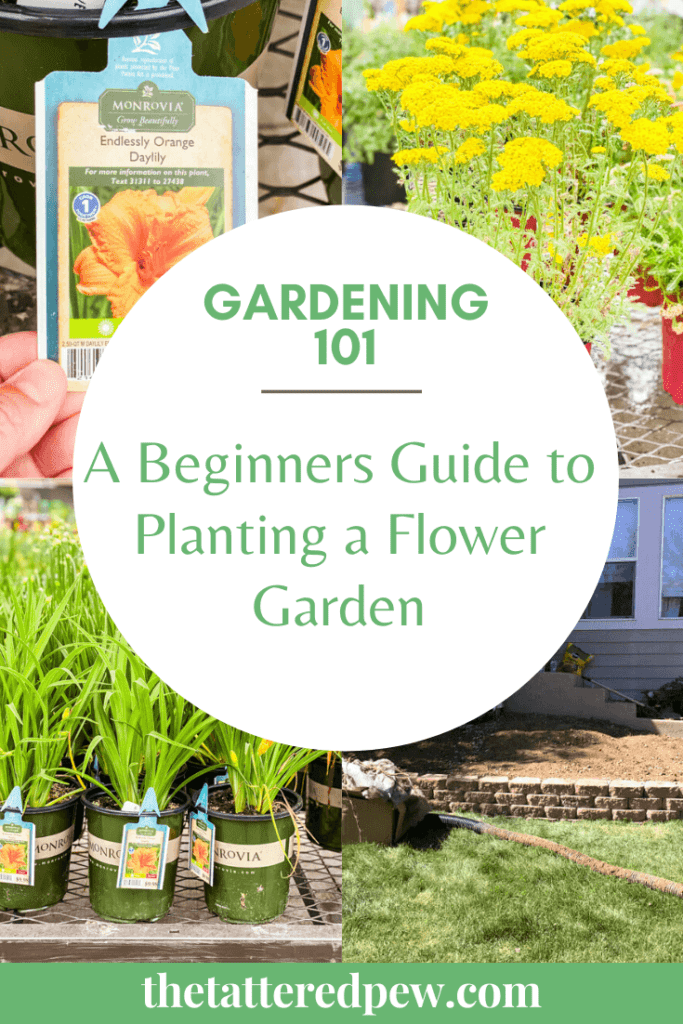
*This post contains some affiliate links for your convenience. Click here to read my full disclosure policy.
A Beginners Guide to Planting a Flower Garden
Welcome to flower gardening 101! Whether you landed here as a newbie gardener looking for some direction on getting started, or you have been gardening for awhile, I’m confident that you will find some helpful flower gardening information to help you on your journey!
And just so you know, I am not an expert gardener. Today I am sharing my research, along with what has worked for me, in hopes that it will work for you too!
I encourage you to follow this simple step by step guide to planting flowers and before you know it, you will have a garden to be proud of!
How to Start a Flower Garden for Beginners
Below you will find a list of 10 steps that will help get you started and on your way to planting your very own flower garden. Consider this your beginners guide to planting a flower garden! Make sure to keep scrolling where I go more in depth for each step.
- Decide What Flowers to Plant
- Pick Your Planting Area
- Do the Research
- Pick Your Flowers & Plants
- Prepare the Soil
- Shopping For Flowers & Plants
- Start Planting
- Caring for Your Flower Garden
- Keep Track of What Works
- Enjoy Your Hard Work
Decide What Flowers to Plant
This is where it all begins! I know this seems strange to be the first step in planting your garden and seems a bit premature, one but bear with me. Deciding what flowers to plant is a good place to begin so you know what to research from here. Will it be perennials, annuals or a mix of both?
For starters you have to know the difference between perennials and annuals so you can make an informed decision.
- Perennials- a plant that lives more than two years.
- Annuals- a plant that lives for one season.
My gardens mostly consist of perennials while my containers and pots on my porch are usually annuals. But last summer I planted zinnias from seed and they are labeled as annuals. However, a few did drop seeds and they came back. Win , win!
Pick Your Planting Area
Of course it’s very important that you find a spot in your yard where you plan to start your flower garden. This will look different for everyone.
For you it may look like containers on a small patio, window boxes, raised beds or bordered areas. Just make sure your space is defined and that you spend plenty of time observing the area before you plant.
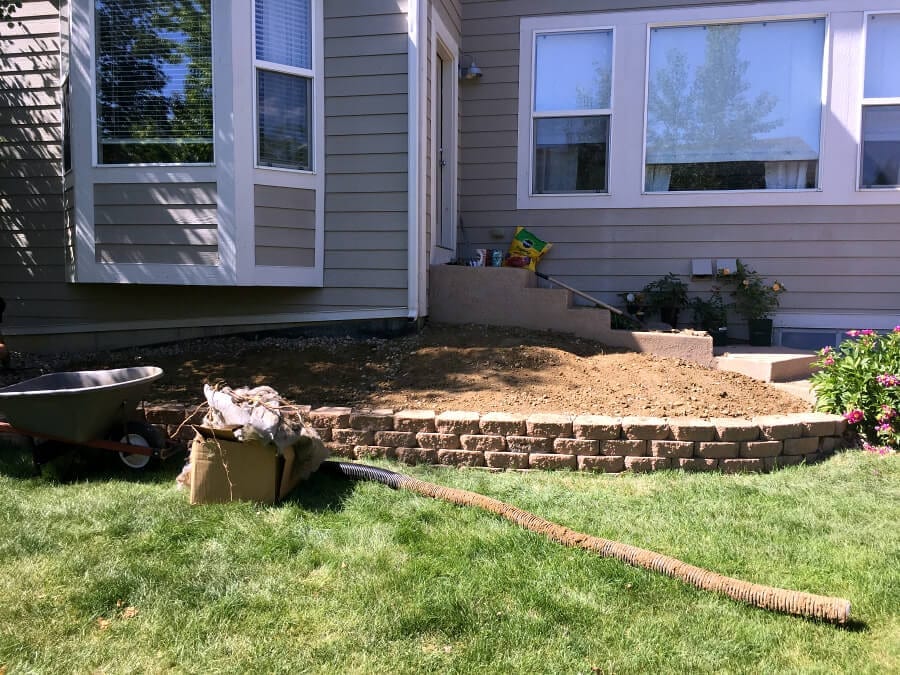
Look for patterns in the weather. Is your garden area in full sun, partial sun or complete shade? This will help you determine which plants will thrive in your newly picked space.
Our raised garden bed shown below, is in full sun and was perfect for planting zinnias from seed. This year, now that I know this space gets perfect full sun, I will try my hand at cosmos!
Click Here to check out my Lazy’ Girl’s Guide to Planting Zinnias
My favorite tip is don’t be afraid to start small! This is what I have done in my own personal yard and it has paid off. I started with a small bordered area in my front yard and have now gradually moved to a larger space in my back yard. This has allowed me to see what plants and flowers work and which ones don’t.
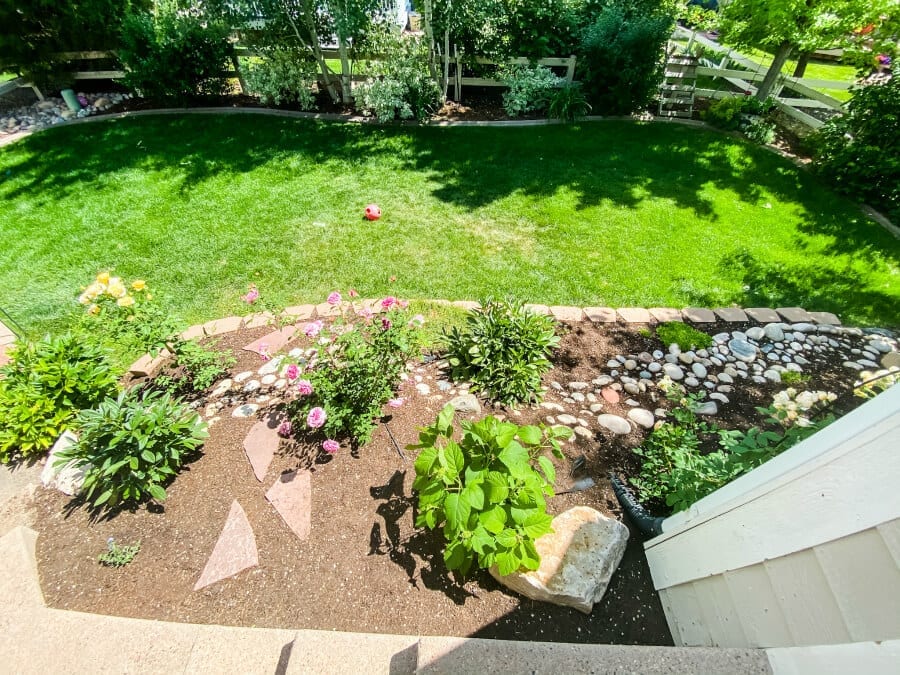
Do the Research
One of the very first things I like to tell my friends who want to start their own garden is to do their research. You don’t want to just walk into a garden center and grab whatever flowers you think are pretty…you want to do your research so you know how to choose the right flowers.
The most important thing to know as a beginner gardener is what garden zone you live in. Knowing your zone will help you know which plants and flowers will be best for your specific region or area. It will also help save you time and money so you are only buying plants that work for your location.
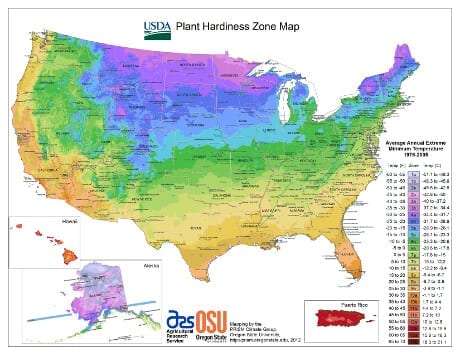
Curious what your zone is? Luckily there is a handy website called garden.org that allows you to search for your zone by your zip code! You can search for your zone HERE! Once you find your zone keep it in a handy place because you will need it for the next step, picking your flowers and plants!
Pick Your Flowers & Plants
Now that you have done your research, and you know to look for plants and flowers that will do well in your gardening zone, it’s time to create your wish list!
First, start by looking around your town and neighborhood for flowers that you love. You can always ask your neighbors and friends the names of the plants they have that you like.
This will save you time finding out specific names of the flowers. Write them down!
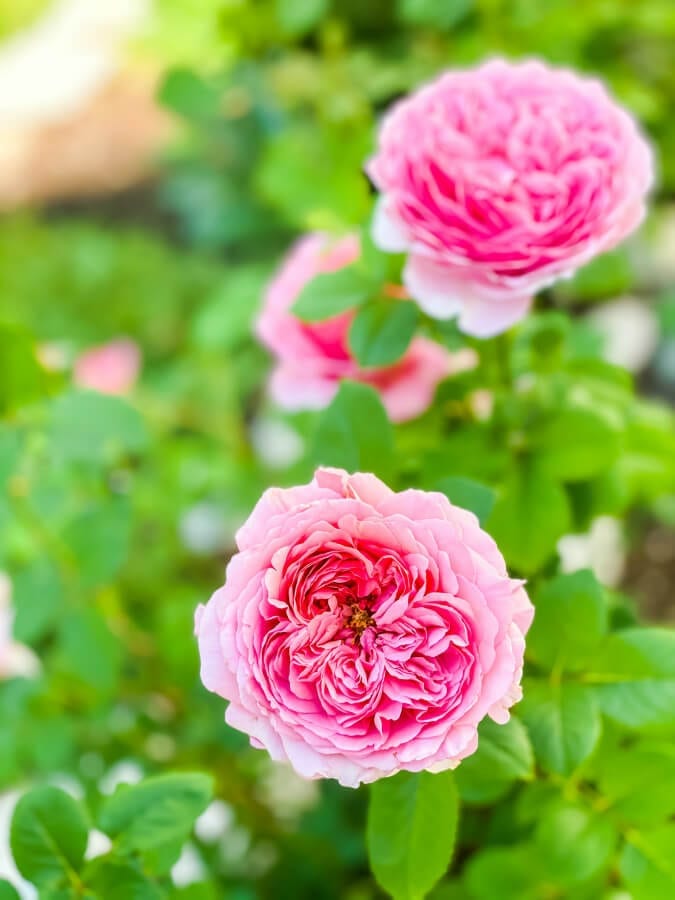
I’m lucky to live near my mom and sister and we are always talking about the flowers we have and which ones are doing well. Its a good idea to have a network of people to chat with about gardening.
This will save you time finding out specific names of the flowers. Most people love sharing what works for them and what doesn’t. Keep notes!
But let’s say that you see a plant or flower in the yard or space of someone you don’t know, and you can’t ask them. Here is my suggestion… find a plant finder app! I really like the Picture This app. It does cost $29.99 for a year but I think the other resources along with the identifier are well worth it especially if you are a new gardener.
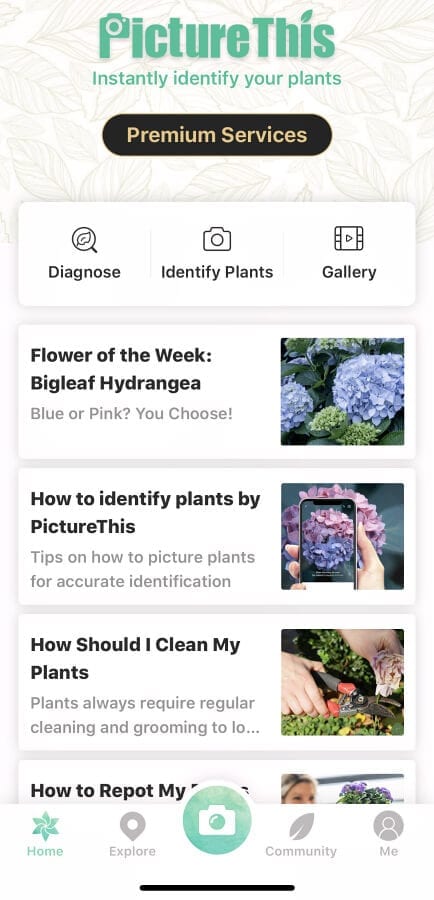
Once you have identified the flower…write it down or enter it into your app. This will have you prepared for when you are ready to go shopping!
Easy to Grow Flowers for Beginners
I have gathered a list of easy to grow flowers for you below. Before deciding on these flowers make sure they grow in your zone! Also, I shared all about my favorite sun loving perennials that I have in my garden.
- Annuals: cosmos, geraniums, impatiens, marigolds, lobelia, sunflowers, and zinnias
- Perennials: Black-eyed Susans, daylilies, hostas, phlox, seedum, purple coneflowers, and Russian sage, salvia
Shopping For Flowers and Plants
At this point you should have a list of the flowers you are looking to buy for your new garden! Make sure that you also have a budget in mind before you head to the garden center or nursery. It will help keep you on track…remember that you can always add flowers as you go!
Take your time!
Tip: Don’t forget to save room in your budget for soil and fertilizer!
Once you are at the nursery or place where you plan to look for flowers (sometimes it takes multiple stops) try not to be overwhelmed or get sucked in to flowers not on your list. Many flower nursery’s will show you, or have flowers, that will NOT work in your area. So this is where your research comes in handy as well reading the tags and being prepared!
Once I bought a hibiscus flower that I loved and thought was beautiful. I tried planting in our backyard garden but did no research, I bought it off of pure looks. It failed miserably and I learned my lesson! Hopefully my story helps you and saves you time and money!
Prepare the Soil
Preparing your soil for the space you have picked out for your garden is a very important step! In order for your flowers to grow you have to have the absolute best soil for them.
First, make sure to add organic matter or compost to the the soil you already have in you space. This will be your flower food and help nourish the roots! It is best to work with your soil when it is slightly damp. One you have added the compost mix it all up real good and before planting, rake the soil and level it.
I feel like has made a world of difference for the flowers in my garden. They grow stronger, healthier and seem to bloom more. Flowers love compost! You can find compost for sale at farms or at your local garden center or even at Home Depot and Lowes. I am lucky and have wonderful neighbors who allow me to use their compost. Whatever you do don’t skip it!
Start Planting
Now that your soil is amended you are finally ready to get your flowers into your soil and garden! I suggest laying them out, still in their containers, where you want to place them. This will give you a good visual of what they will look like next to the other flowers and in the actual garden space. If you need more help and are a visual learner like me then I suggest you look up garden plans on Pinterest , Google, or bhg.com and search: flower garden plans or design. So many free ideas will pop up!
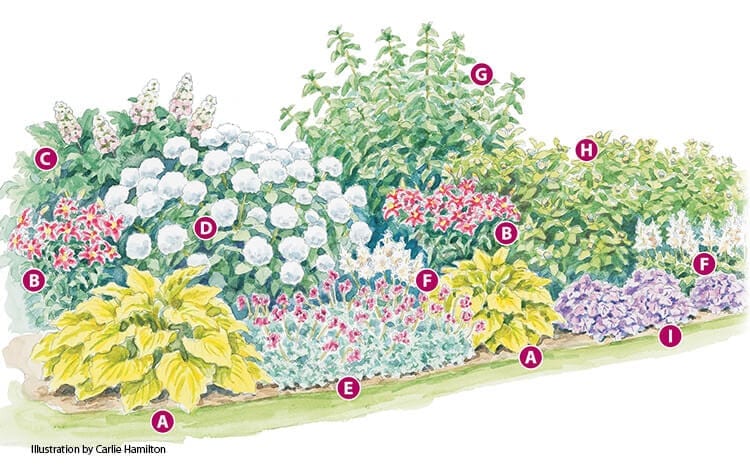
Dig your holes according to the directions on your plant tag. Most flowers have similar requirements but some, like peonies, require a shallow hole when being planted. Once my holes are dug and before I place the flowers in them, I like to add a little fertilizer to the sides and the bottom. This is my favorite one!
Now that you have your holes dug, remove them from their bucket or packaging and loosen the roots with your fingers. Most roots are compacted from being in containers for too long and this will encourage the roots to spread and grow!
Finally, place them in your hole and fill it back up with your dirt and compost. With your hands create a circle around the base of your flower and push and compact the dirt down. Once you have done this for all of your plants water them when they are all in the ground.
Caring for Your New Flower Garden
Now is when it’s time to care for your new flower garden. For us when we prepared our garden in our backyard we ran a drip line to each of the new plants. This watering system in connected to our sprinkler system and is easy to add to when you plant new plants.
I recommend a drip when you have a larger garden space. It enables you to be consistent in watering your flowers which is what they need especially when they are first planted. You also will notice in the picture below that we put a weed blocker down on top of our soil as well.
Most people wonder how often you should water your newly planted flowers. The answer is during the first week you should water your new flowers everyday. Avoid watering in the heat of the day and instead water them during the morning or evening when it is cooler. After week one, depending on the heat, you can go every other day, or every two days.
Fertilizing
How often should I fertilize my perennials? This is a great question for a beginner gardener! The answer is in early spring and in early fall. Also, when you deadhead your perennials it’s a good time to fertilize again. So three times is the magic number.
Deadheading
Like I mentioned above deadheading is one way to care for your flowers and encourage new blooms. Dead heading is when you cut off the dead or spent flowers. Not all flowers require this and I would suggest if you aren’t sure if you should deadhead a specific flower, look it up!
Keep Track of What Works
This is very important if you want your garden to thrive. Now that you have all of your flowers picked out and in the garden make sure to keep all of the tags that came with the flowers. These are super helpful and can help you remember where, and what you purchased. Most nursery give you a one year warranty on your purchase so saving your receipt can be a good idea as well. Each nursery has different policies so make sure to check policies for where you buy your flowers.
Honestly, I have tried to keep every tag. They aren’t perfectly organized ( I have a plan for that) but they are in a baggie in my garage. Ha!
I have lost a few and sometimes look at my garden and wonder what the heck certain flowers are. For a majority though I have the tags and know what they are! I am looking to start a flower/plant journal, I will let you know when I have that completed and will make sure to share it with you all.
Enjoy Your New Flower Garden
After all of your hard work and research it is finally time for you to enjoy your new flower garden. Take pictures, cut flowers to bring inside and maybe even pull up a few chairs to enjoy an outdoor dining spot.
Other Gardening Posts You Might Enjoy:
- Tips & Tricks for Planting Hostas in Pots
- Lazy Girl’s Guide to Planting Zinnias
- Gorgeous Flower Pot Ideas & Tips
- My Favorite Sun Loving Perennials
- Tips & Tricks for the Best Peonies
- The Best Late Spring to Fall Blooming Flowers
- Creative Backyard Landscaping Ideas On a Budget
- Limelight Hydrangea Trees
A Beginners Guide to Planting a Flower Garden
I hope this beginners guide to planting a flower garden had been helpful. Please let me know if you have any questions (nothing is dumb) and remember to have fun and enjoy the beauty of your freshly planted flowers!
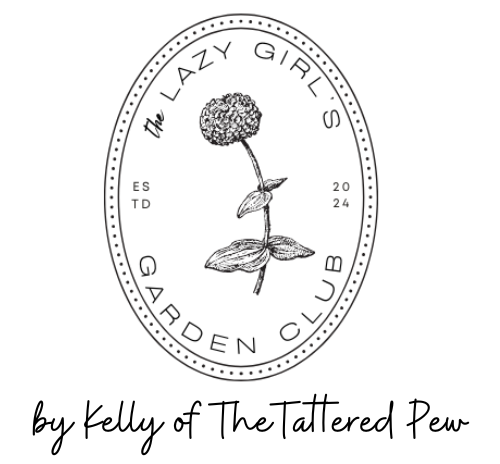
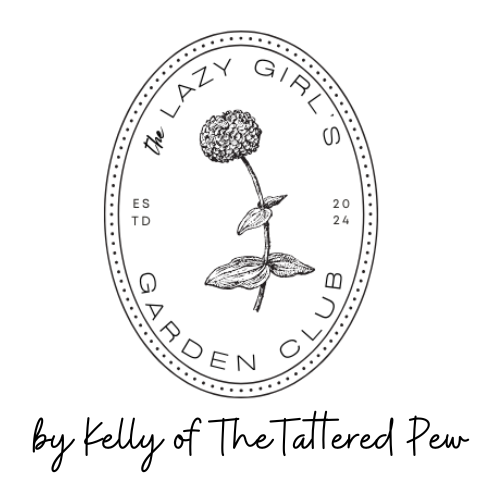
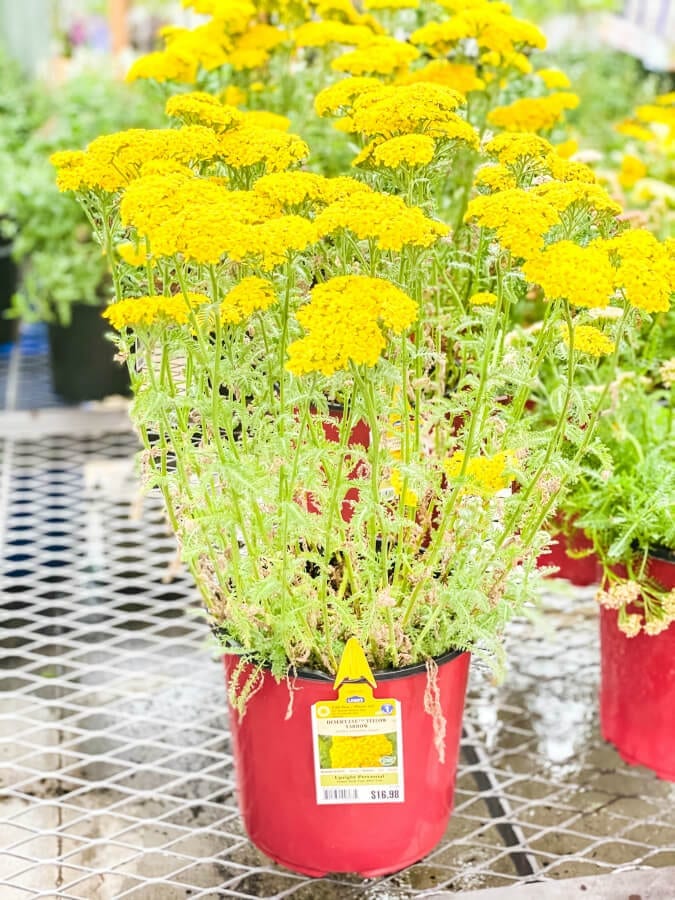
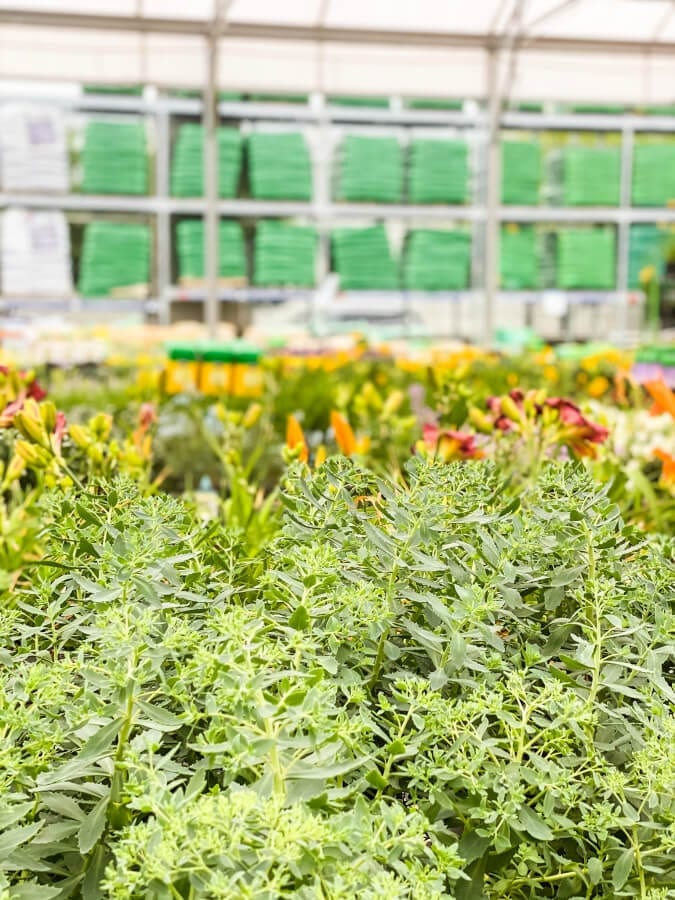
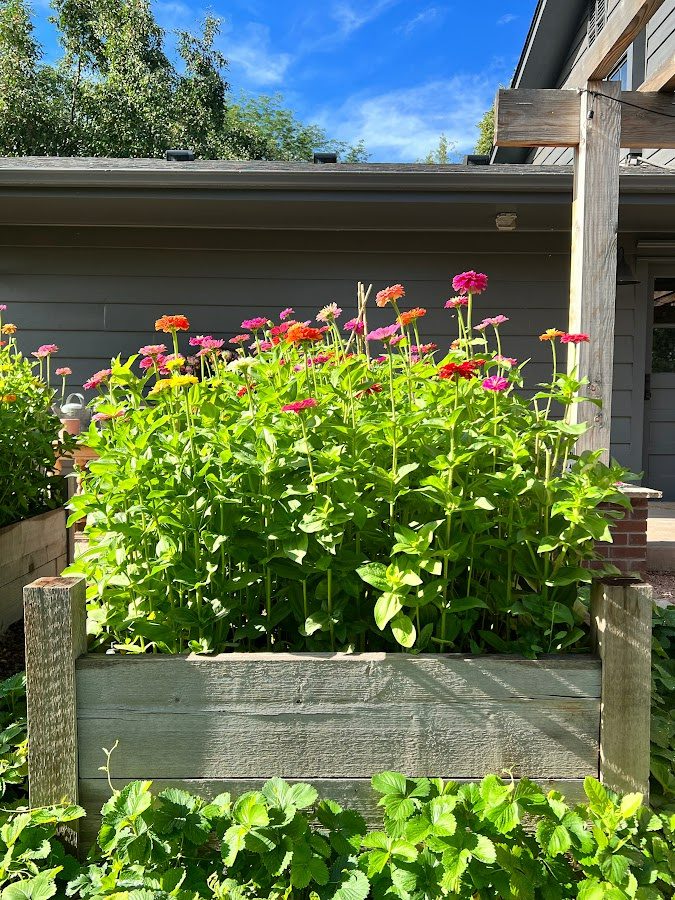
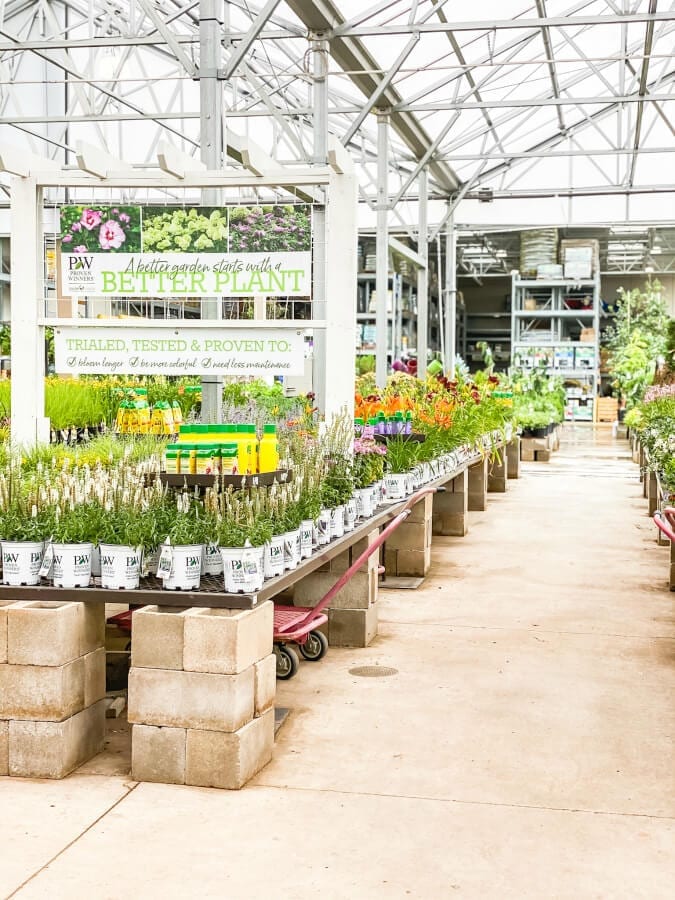
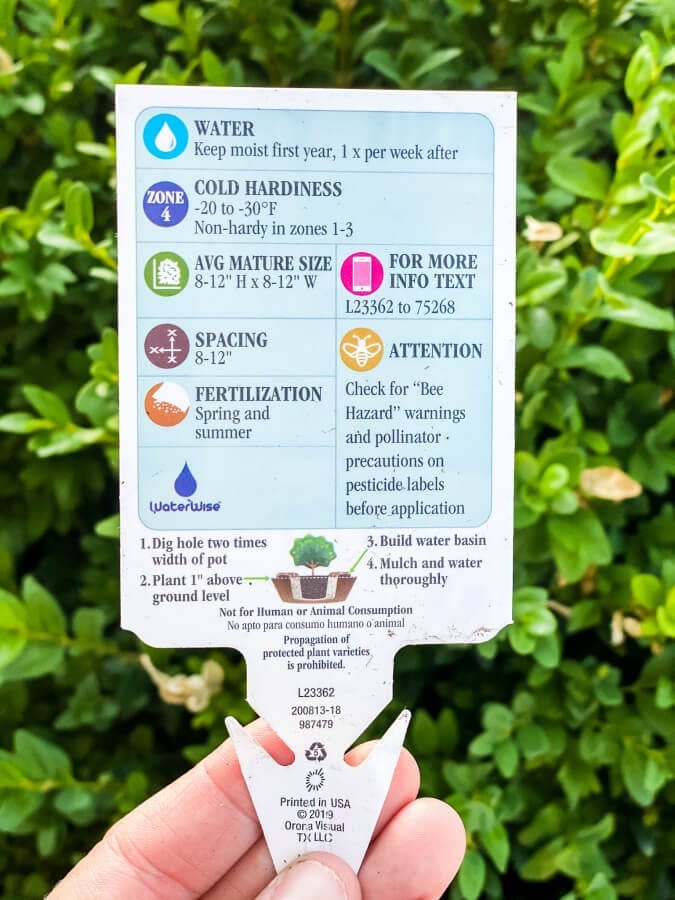
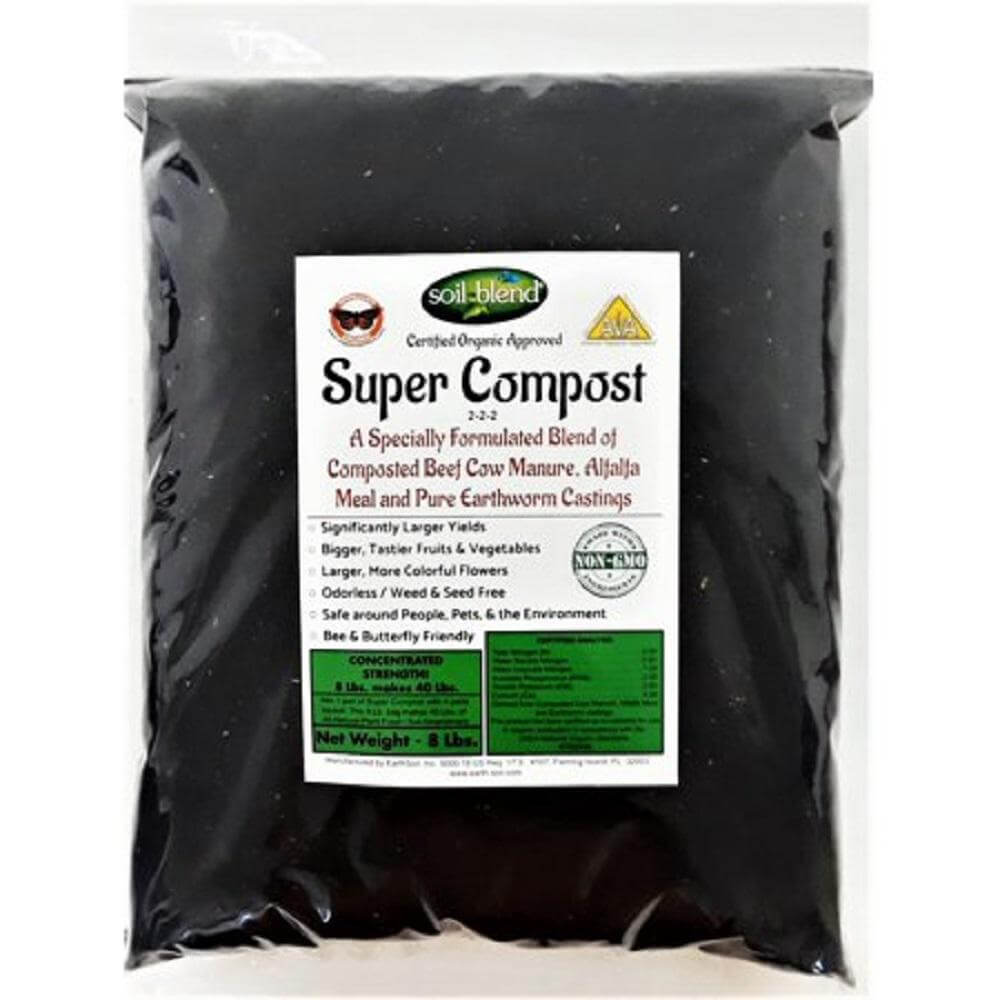
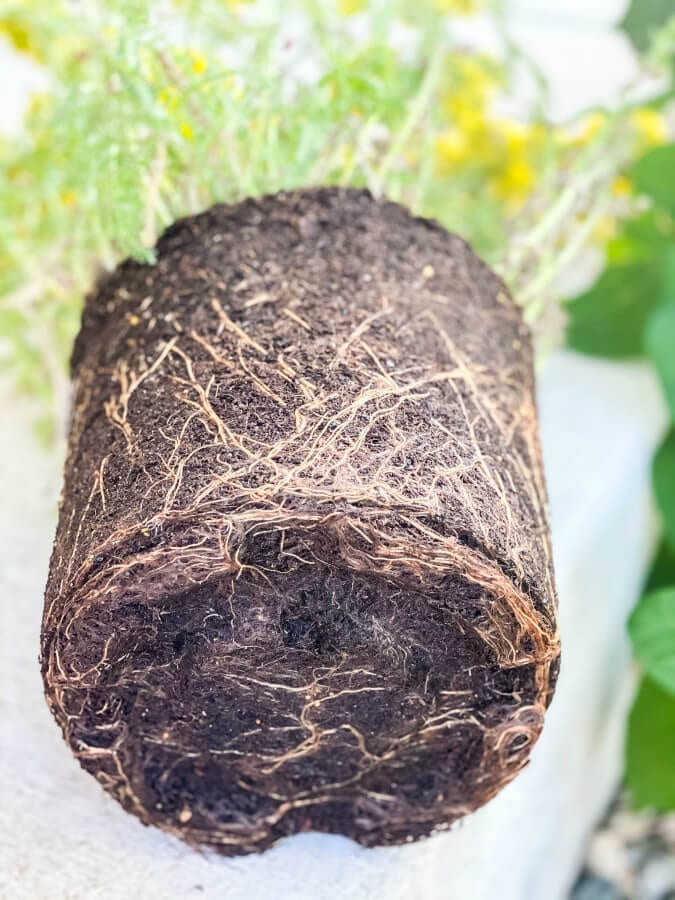
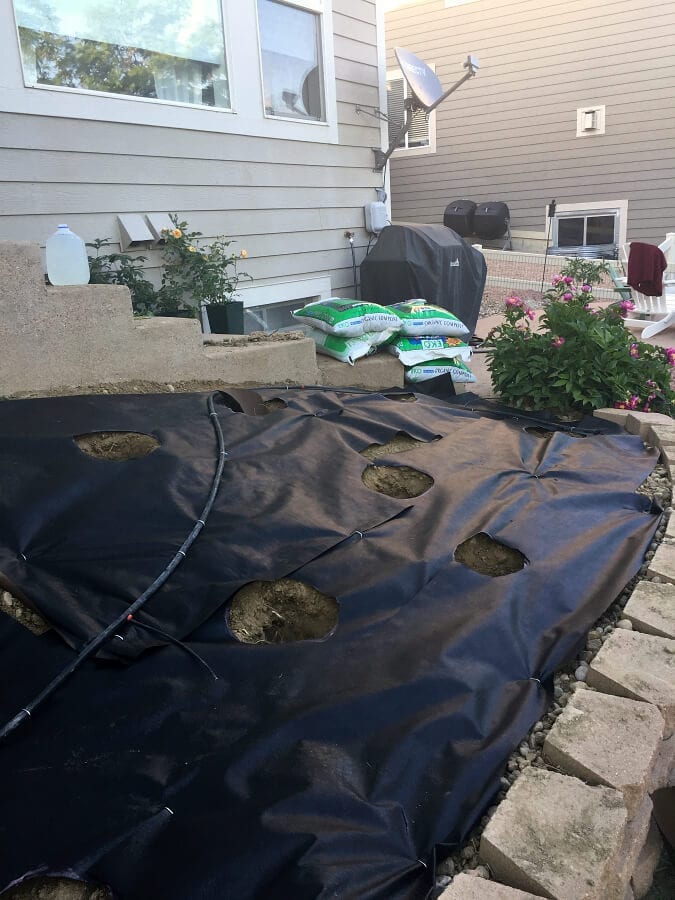
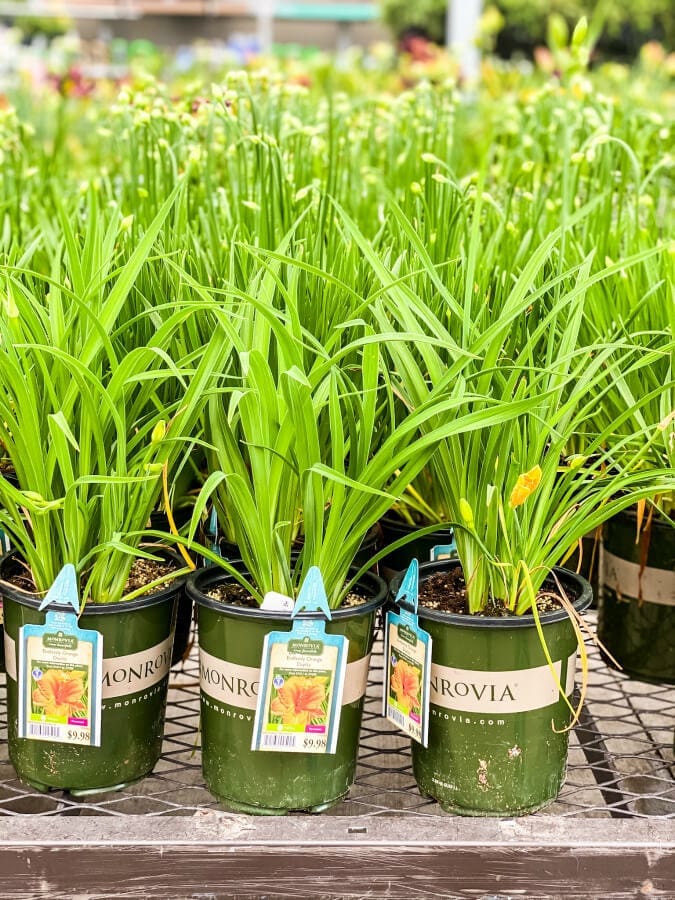
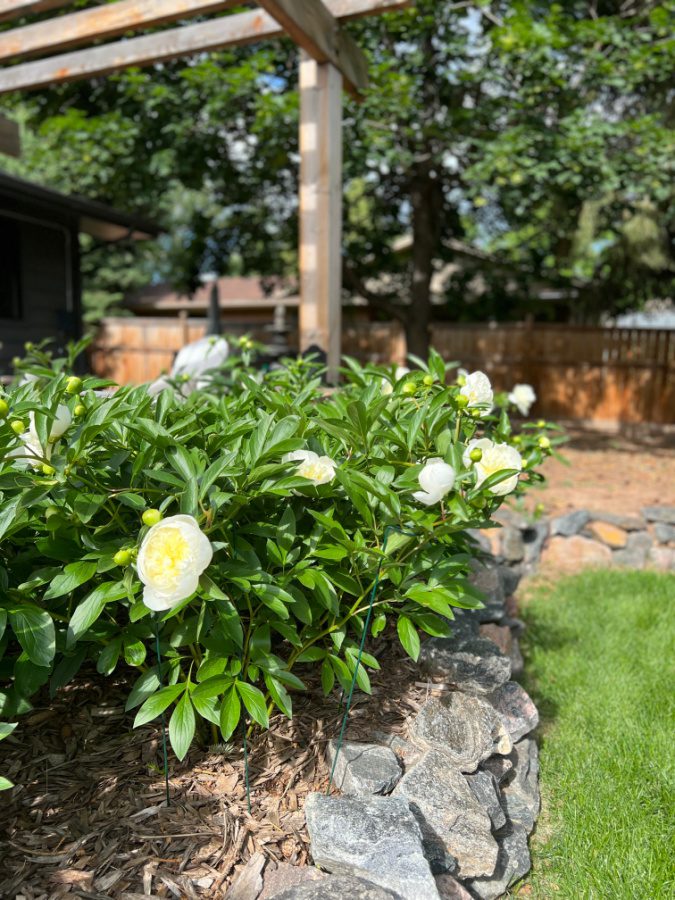
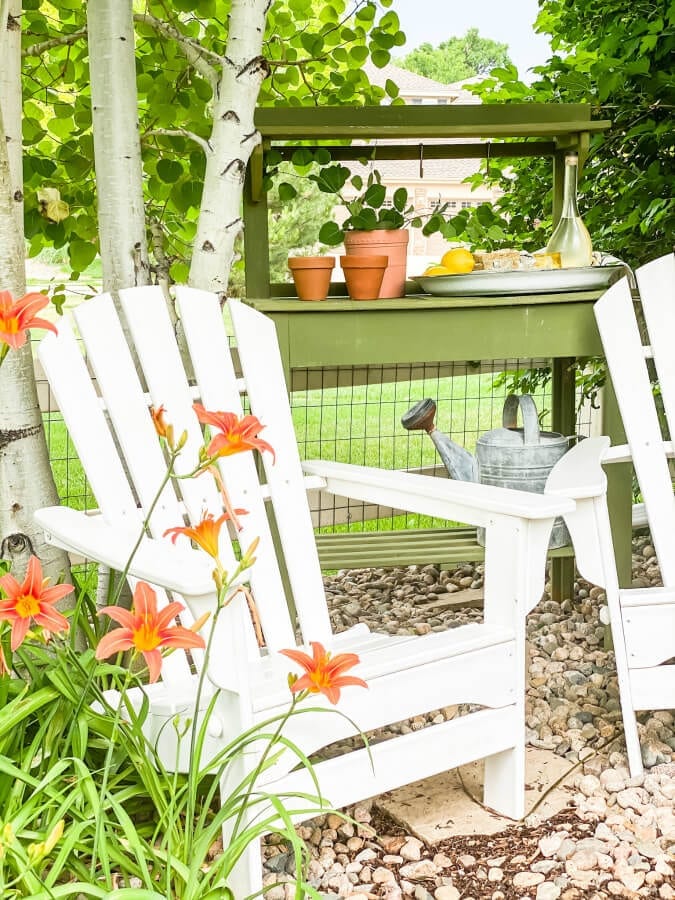
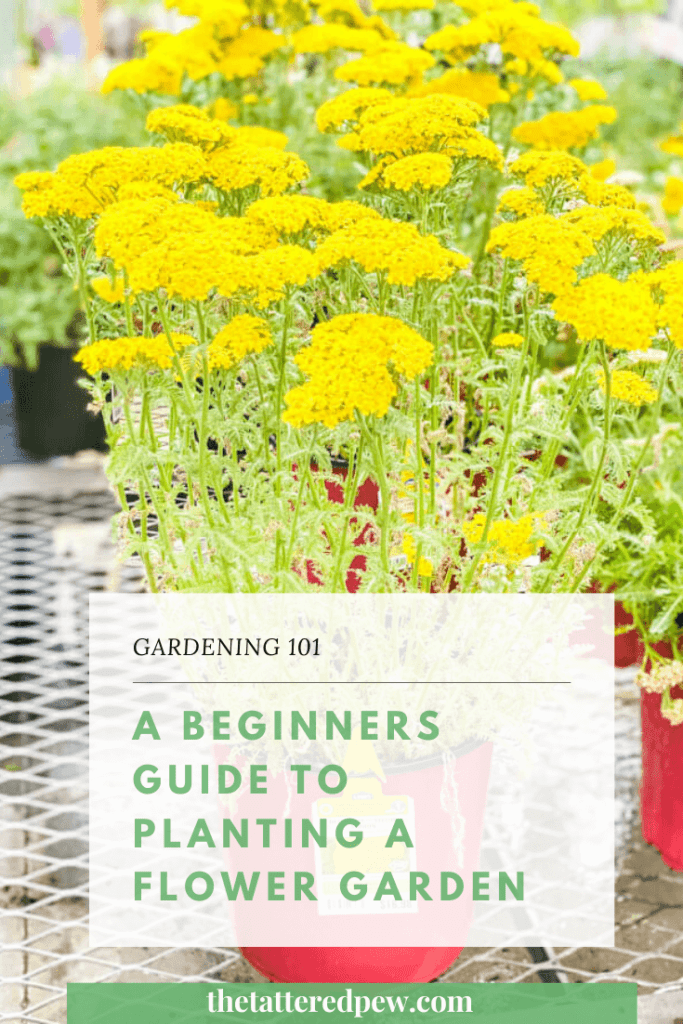
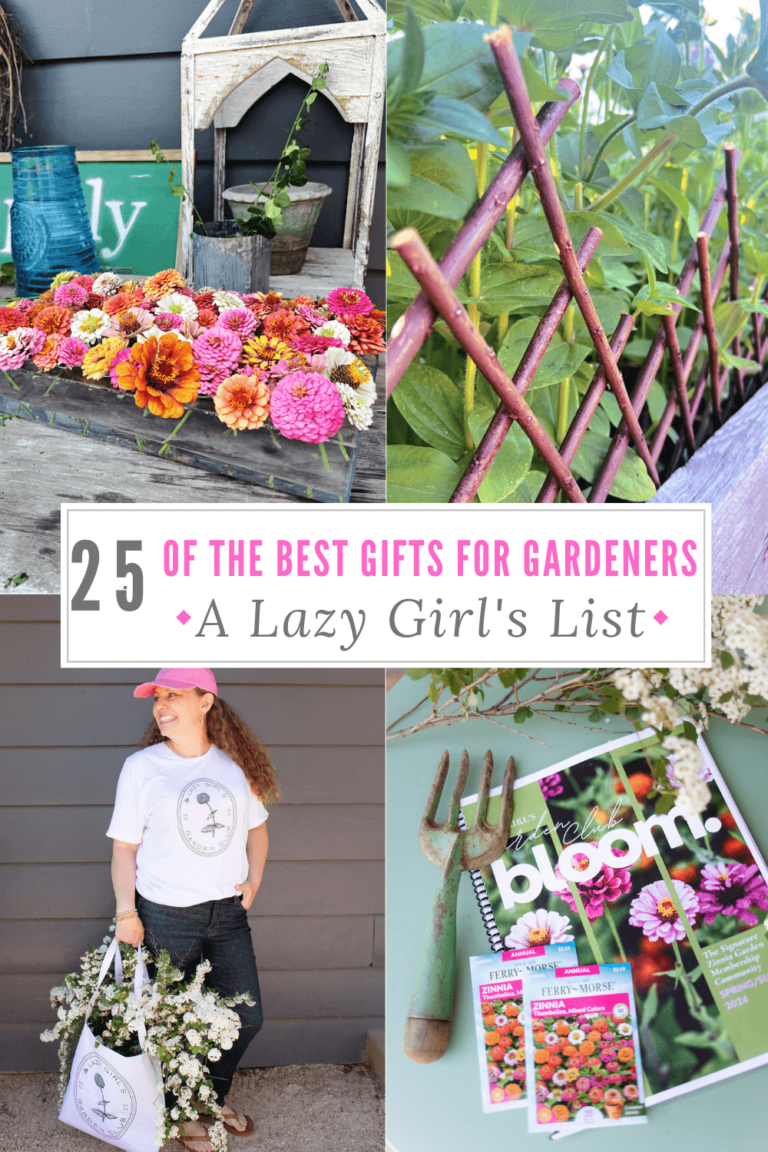
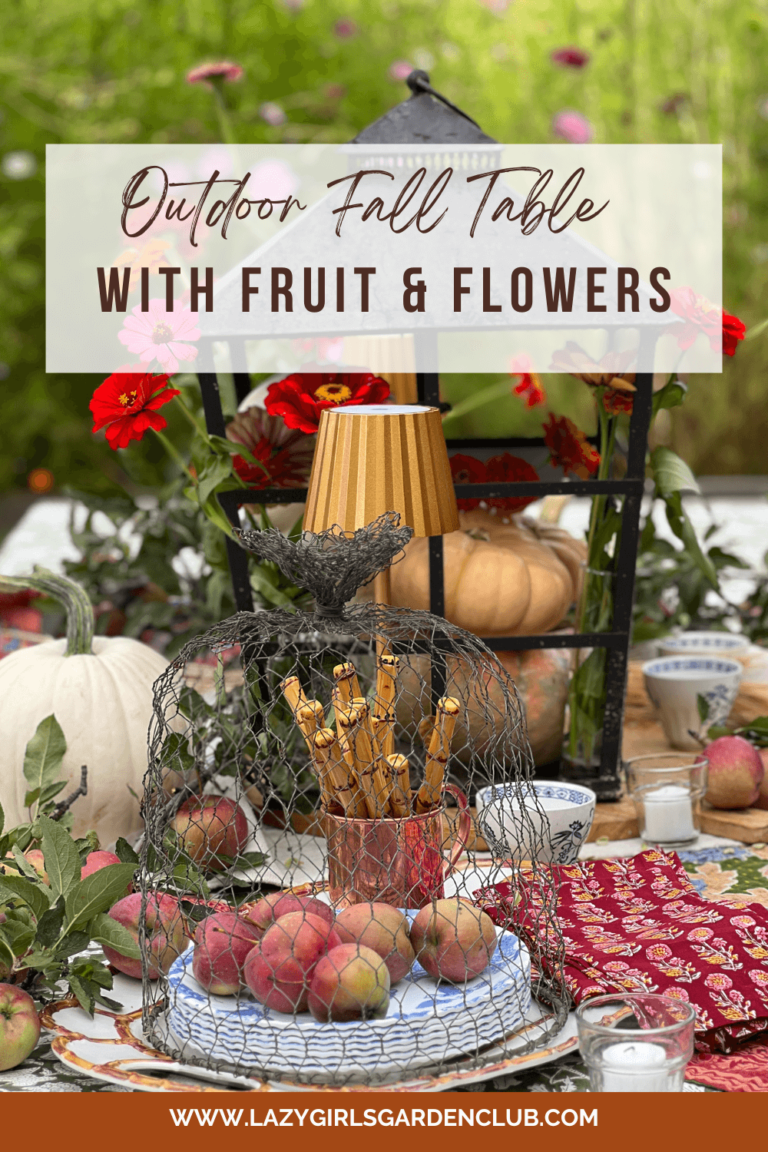
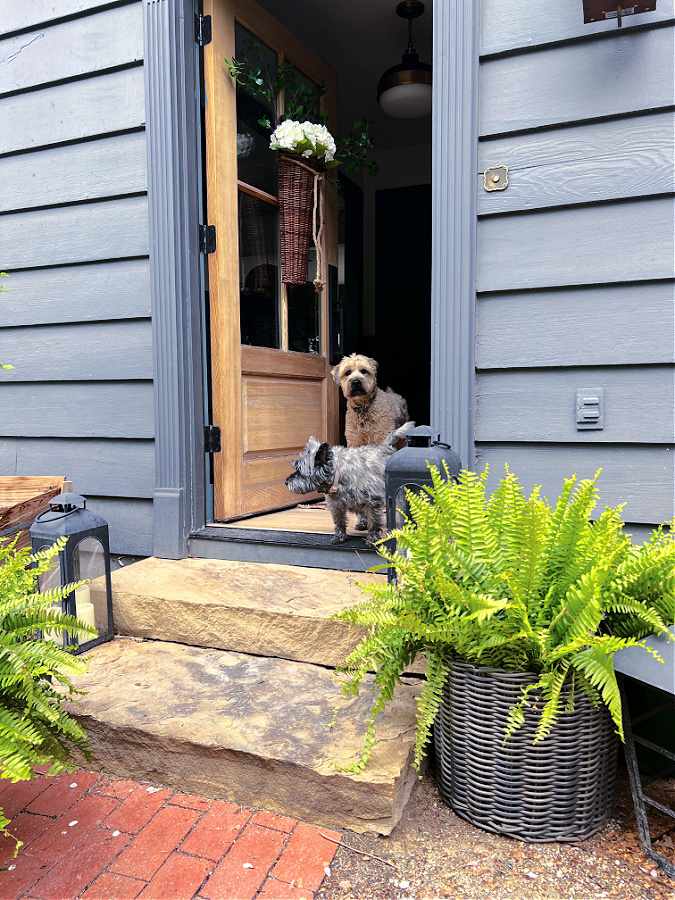
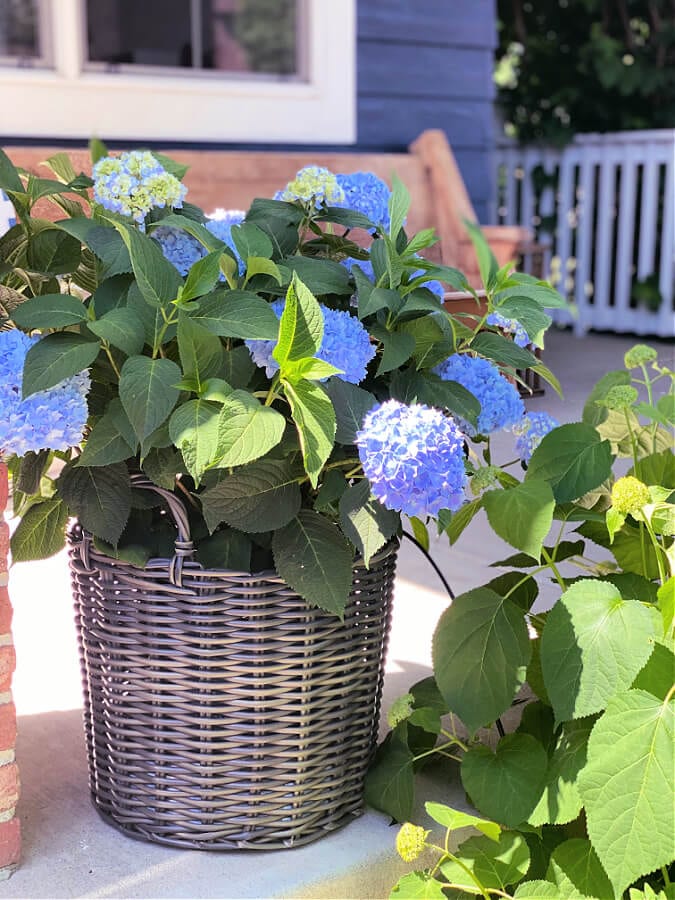
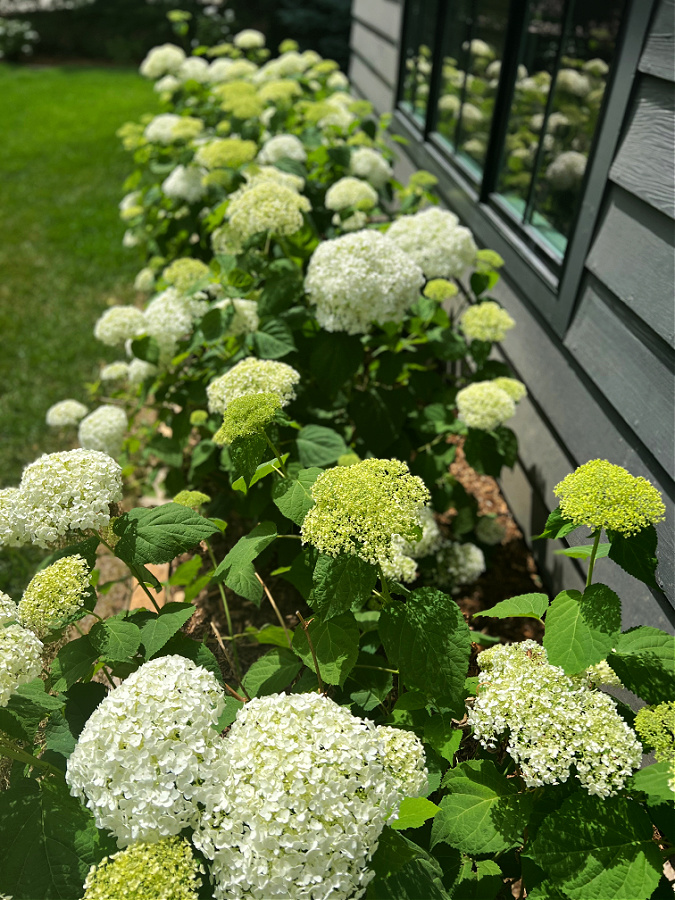
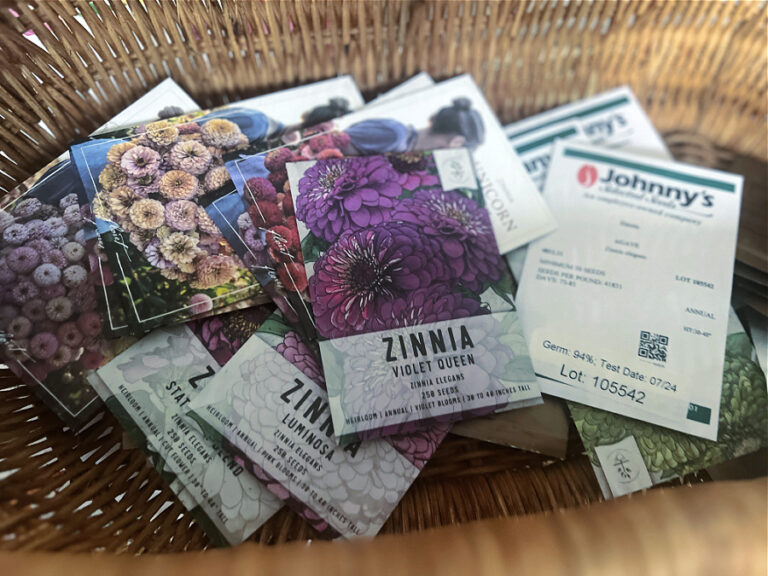
These are all such great tips. I will definitely be referencing this in these future. Thanks for sharing, Kelly!
Thank you Jen! I appreciate that and I’m happy to hear it was helpful!
Kelly, this is a great post! I miss be able to have nany perennials in our yard. MS doesn’t allow me to garden like years ago.
I have made our deck my garden. I am thrilled that I have space to enjoy plants.
Cindy
Than you Cindy! I love that you have your deck space and it sure is pretty!!!
Such great tips Kelly! I absolutely love those David Austin roses.
Thank you so much Shawna!
Awesome tips for anyone at any stage of their gardening adventure.
Thank you Jenn! That was my goal!